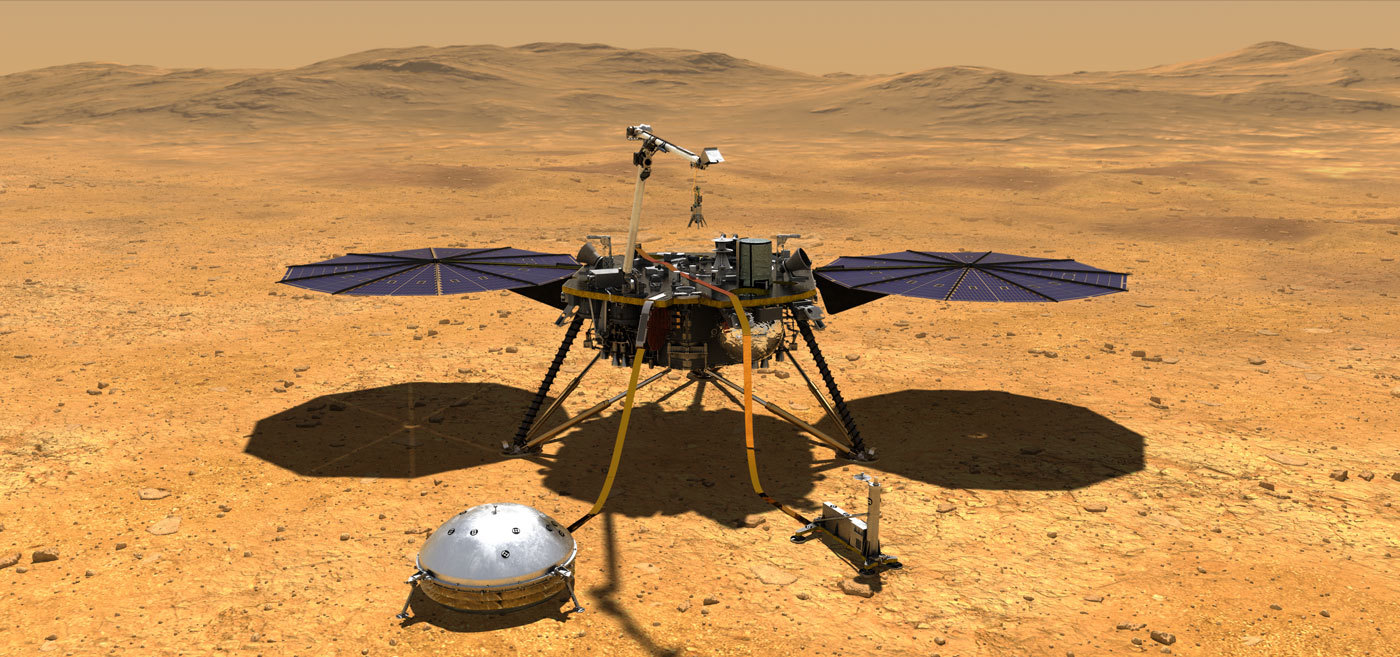
InSight Deploys its Instruments: This artist’s concept depicts NASA’s InSight lander after it has deployed its instruments on the Martian surface. Credit: NASA/JPL-Caltech.
You don’t need wheels to explore Mars.
After touching down in November, NASA’s InSight spacecraft will spread its solar panels, unfold a robotic arm … and stay put. Unlike the space agency’s rovers, InSight is a lander designed to study an entire planet from just one spot.
This sedentary science allows InSight to detect geophysical signals deep below the Martian surface, including marsquakes and heat. Scientists will also be able to track radio signals from the stationary spacecraft, which vary based on the wobble in Mars’ rotation. Understanding this wobble could help solve the mystery of whether the planet’s core is solid.
Here are five things to know about how InSight conducts its science:

